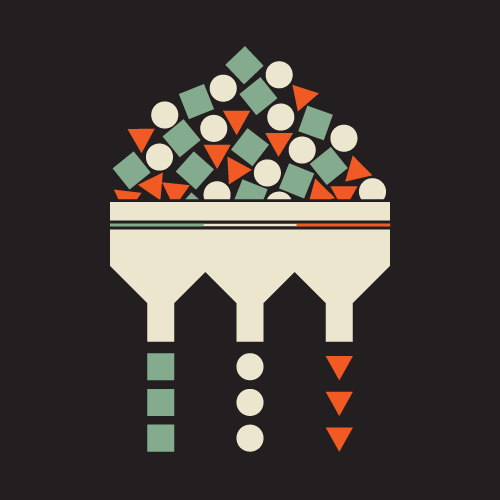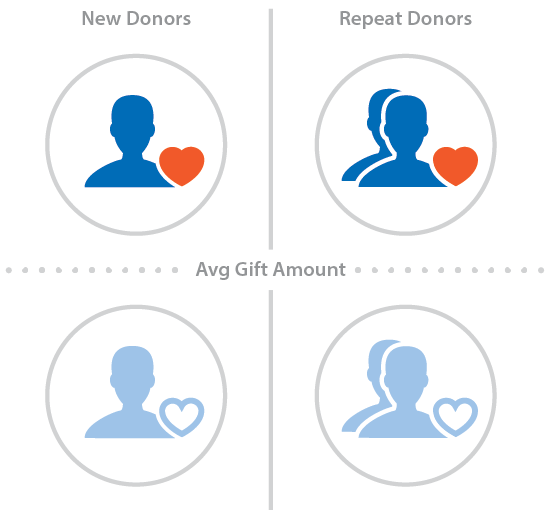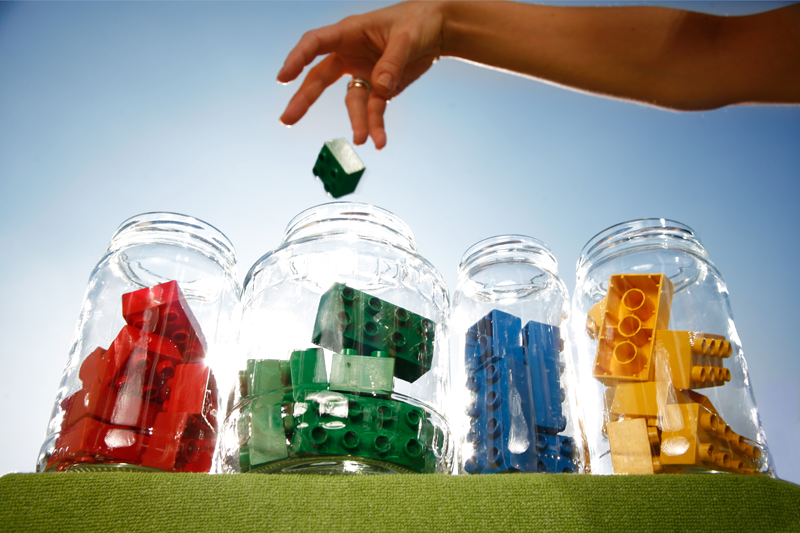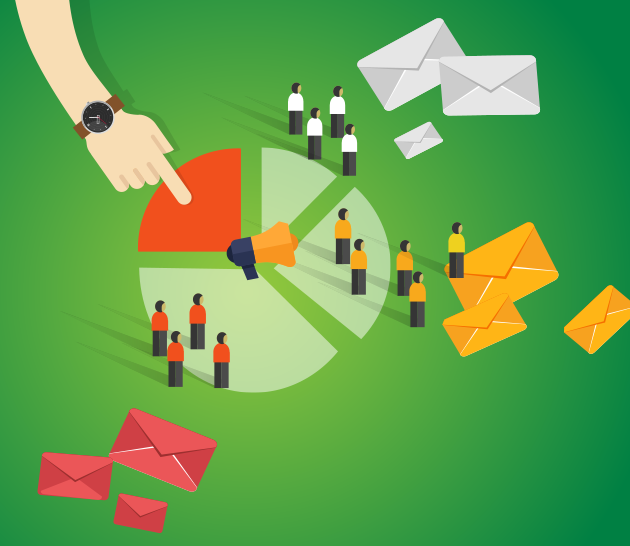In recent weeks we’ve discussed a few key principles of effective event emails, including how to compose compelling “save the date” invitations and general tips for strategizing an email campaign.
Today let’s look at a fundamental best practice that gets more conversions—that is, more clicks and responses to your emails. This can look like more tickets sold, more social media shares, more registrations, and ultimately more revenue.
So, what’s the key to increasing donor participation? Two steps: segmenting your donor base and targeting messaging to each different segment. It’s that simple!
A recent survey by email service provider MailChimp shows just how effective this strategy is. They tracked 11,000 segmented email campaigns and found that list segmentation increased email click-through rates by 65% and open rates by 14% compared to their non-segmented emails, while trimming unsubscribes by 9%. Other research suggests 24% of companies that segment lists see increased revenue as a result.
Sound good? Read on to learn how your organization can take advantage of this simple but impactful tactic.
Segmentation Overview
Your donor base is made up of unique individuals. Yes, they all have a common connection—an interest in your cause—but no two supporters are alike. There are obvious differences, like age and gender, but also ones below the surface, like personal background and motivations.

The idea behind donor segmentation is that donors are more likely to open and act upon your email if they are interested in its contents. (Remember that an opened email holds little value outside of its ability to get the reader to respond.) The more specific and targeted your messaging can be, the more likely it is they’ll open and follow through on your call to action—and less likely they’ll get frustrated and unsubscribe.
While mass messages certainly have their time and place (like save the dates), they’re not ideal for creating a personal, intentional connection with each donor. What works for one donor may not work for the next.
Step 1: Segment donors
It would be nice if you could personalize every email individually, but limited time and resources make this impossible. Sending the same emails to all your donors isn’t the best use of your communication, either.
To the rescue: list segmentation!
Segment your list by creating a few donor personas to differentiate types or groups within your audience of donors. Each persona has varying preferences, motivations, attributes and demographics. Knowing about them will help you target and focus your fundraising efforts for better results.
Just like donors, every organization and event is different, and you’ll need to brainstorm what segments and personas are most relevant for your email campaign. Here are just a few example categories to consider that might affect the messaging of your emails:
- Have they submitted an RSVP? For an event email, one of the easiest and most important ways to segment your audience is to separate those who have bought tickets from those who haven’t. Simply take an Excel file of your RSVP guest list and create a new mailing list. Then update this mailing list with the newest guests before sending each new email campaign.
- What are their interests? One way to do this from the start is to ask donors to select their programs or causes of greatest interest when they first interact with your organization (such as signing up for your newsletter or donating online).
- Have they been involved in the past? You can create separate lists of people who have attended your event in the past; those who have not; those who have donated but not attended, etc.
- How long have they been on your mailing list?
- What’s their basic info (age, location, etc.)? Men and women have different bidding styles and may be interested in different auction items.
- How much have they donated in the past? Read on for tips on using this information to attract sponsors.
No matter what categories you choose, remember to keep it simple! There are infinite possibilities for list segmentation, so we highly recommend sorting donors into just a few different, broad categories. (After all, you don’t want to spend so much time sorting and targeting that you may as well email each person individually!)
Get the most out of your email campaigns! Download the free eBook, “Beginner’s Guide to Email Event Promotion,” with bonus content calendar to plan and organize efforts.
{{cta(‘661274c0-1d2e-4806-a547-596f67dbe59d’,’justifycenter’)}}
Step 2: Target Messaging
For something as important as your annual event, you want to make sure the whole database gets at least an invitation and the basic information of your event. And there are some messages you should be sharing with all subscribers, like promoting auction items, offering sponsorship opportunities and encouraging social media promotion.
However, there are still ways to fine-tune emails to increase participation. To use segmentation to your advantage in email marketing, tailor your messaging to achieve a specific action. This is where “donor personas” come into play.
Sample segment: RSVPs
Again, your messaging totally depends on the personas and segments you decide are most relevant to your goals. Let’s look at an example: the RSVP lists.
One of the most common event email mistakes is sending an email asking someone to buy tickets to your event when they’ve already purchased them. Many nonprofits and companies do this, over and over again, for weeks before their event. But there’s a simple solution!
- No RSVP: The focus for this group of subscribers is to entice them to take action and purchase tickets. For these readers, keep promoting the highlights of your event and using compelling stories and statistics of your nonprofit’s impact to command attention. Take time to highlight the most exciting prizes and Experiences that will be up for bid at your event.
- The main call-to-action button or link should clearly state “Buy Tickets” or similar.
- RSVP’d already: Those who have purchased tickets should receive slightly different emails. Since you already know they’ll be in attendance, spend more time prepping bidders to maximize your revenue in the live and silent auctions. Highlight your most unique, valuable and sought after items. (For ideas, check out the “Ultimate List of 100+ Silent Auction Item Ideas“!) You can also share stories from your mission or the impact of your event on your programs and services.
- Appropriate calls to action for ticket holders include “View Auction Items,” “View Sponsorships,” “Learn More”, “Donate!”… you get the idea.
For more examples of impactful calls to action in event emails, read “9 Easy Ways to Make Fundraising Event Emails More Effective.”
Sample segment: Interests
As mentioned above, consider sorting donors by what they’re most interested in when it comes to supporting your organization. What motivates your donors to act? What interests them most about your event?
Consider asking donors to select which updates they want most, be it volunteer opportunities, certain programs, a particular cause or need, or the annual gala, race or golf tournament.
Alternatively, you can send out a quick online survey. Offering a small prize (like a $50 Amazon gift card) ensures responses. Now you can write your emails with confidence that readers will be interested in the message and less likely to opt out of future correspondence.
Sample segment: Donor level

By paring your sponsorship offerings down to something digestible for each reader, they’re less likely to think your call to action is “for someone else” or simply out of their means.
It’s up to you how many sponsorship levels you want to provide. For example:
- Donors at or below the average gift amount could be sent sponsorship opportunities that range from $50-$1,000. You could suggest sponsoring a smaller expense of the event.
- Donors at or above the average gift amount could be sent sponsorship opportunities that range from $1,500 – $10,000. These could be small businesses or individual donors that sponsor a table at your event, get their logo on your marketing materials, or underwrite your big-ticket consigned auction items like travel packages (allowing 100% of the winning bid to go to your cause!).
You can also consider how long they’ve been receiving your email updates. New donors may want to know more about your mission before being asked to donate, or appreciate smaller donation asks than long-time supporters.
Segmenting your donor database and tailoring event emails accordingly definitely takes time and effort, but the numbers are clear: the payoff is worth it! Take advantage of the diversity of your donor base. More targeted emails means more responses, more participation, and ultimately more funds your organization is free to use however you see fit to support your cause.
Raise record-breaking profits at your next auction with Winspire’s latest resource, Checklist Builder. Checklist Builder is a simple but powerful tool for anyone planning an auction fundraising event. It contains shareable to-do lists that make task delegation simple, plus a wealth of educational resources and time-saving templates. Click below to sign up 100% free!
{{cta(‘ba326600-0d41-427d-9835-342fbadae3ec’,’justifycenter’)}}



